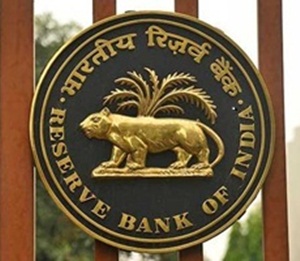Growth of overall credit flow from scheduled commercial banks (SCBs) remained subdued at 8.7 per cent year-on-year in September 2019, though private sector banks (PVBs) recorded double digit credit growth of 16.5 per cent.

SCBs’ capital adequacy ratio improved significantly after the recapitalisation of public sector banks (PSBs) by the government, but that has not helped to rein in the rising non-performing assets with SCBs, says a financial stability report released by the Reserve Bank of India.
Gross non-performing assets (GNPA) ratio of SCBs remained unchanged at 9.3 per cent between March and September 2019 while provisioning for bad loans or Provision Coverage Ratio (PCR) of all SCBs rose to 61.5 per cent in September 2019 from 60.5 per cent in March 2019.
Gross non-performing assets (GNPA) of scheduled commercial banks (SCBs) may increase from 9.3 per cent in September 2019 to 9.9 per cent by September 2020, primarily due to change in macroeconomic scenario, marginal increase in slippages and the denominator effect of declining credit growth, as per stress tests conducted by the Reserve Bank of India (RBI).
As per network analysis, total bilateral exposures between entities in the financial system registered a marginal decline in the quarter ended September 2019. Among all the intermediaries, private banks (PVBs) saw the highest y-o-y growth in their payables to the financial system, while insurance companies recorded the highest y-o-y growth in their receivables from the financial system. Commercial Paper (CP) funding amongst the financial intermediaries continued to decline in the last four quarters.
The size of the inter-bank market continued to shrink with inter-bank assets amounting to less than 4 per cent of the total banking sector assets as at end-September 2019. This reduction, along with better capitalisation of PSBs led to a reduction in contagion losses to the banking system, RBI stated in its Financial Stability Report.
RBI said it has initiated policy measures: to introduce a liquidity management regime for NBFCs; to improve the banks’ governance culture; for resolution of stressed assets and for the development of payment infrastructure.
RBI has accepted some of the key recommendations of the Task Force on Offshore Rupee Markets, viz, allowing domestic banks to freely offer foreign exchange prices to non-residents and allowing rupee derivatives (with settlement in foreign currency) to be traded in International Financial Services Centres (IFSCs).
Besides, RBI said, the Securities and Exchange Board of India (Sebi) has taken a number of steps to improve the financial markets, including a revised risk management framework of liquid funds, revised norms for investment and valuation of money market and debt securities by mutual funds (MFs), revised norms for credit rating agencies (CRAs), facilitating new commodity derivative products and setting up institutional trading platforms (ITPs) on stock exchanges to promote start-ups.
The Insolvency and Bankruptcy Board of India (IBBI) continues to make steady progress in the resolution of stressed assets.
The Insurance Regulatory and Development Authority of India (IRDAI) has taken initiatives for growth of InsurTech and strengthening insurers’ corporate governance processes.
The Pension Fund Regulatory and Development Authority (PFRDA) continues to bring more citizens under the pension net.
RBI said the country’ financial system remained stable notwithstanding weakening domestic growth. The resilience of the banking sector has also improved following recapitalisation of PSBs by the government.
However, risks arising out of global/domestic economic uncertainties and geopolitical developments persist.
The global economy confronted a number of uncertainties – a delay in the Brexit deal, trade tensions, whiff of an impending recession, oil-market disruptions and geopolitical risks – leading to significant deceleration in growth. These uncertainties weighed on consumer confidence and business sentiment, dampened investment intentions and unless properly addressed are likely to remain a key drag on global growth.
In India, aggregate demand slackened in Q2of FY20, further extending the growth deceleration. While the outlook for capital inflows remains positive, India’s exports could face headwinds in the event of sustained global slowdown but current account deficit is likely to be under control reflecting muted energy price outlook.
Reviving the twin engines of consumption and investment while being vigilant about spillovers from global financial markets remains a critical challenge going forward, says the report.























